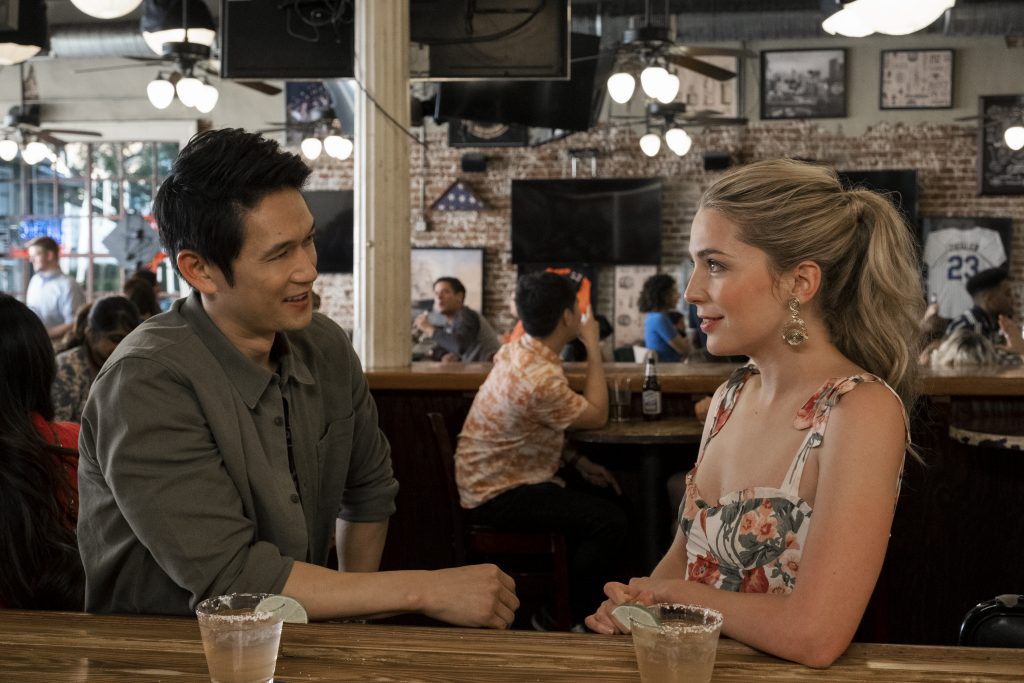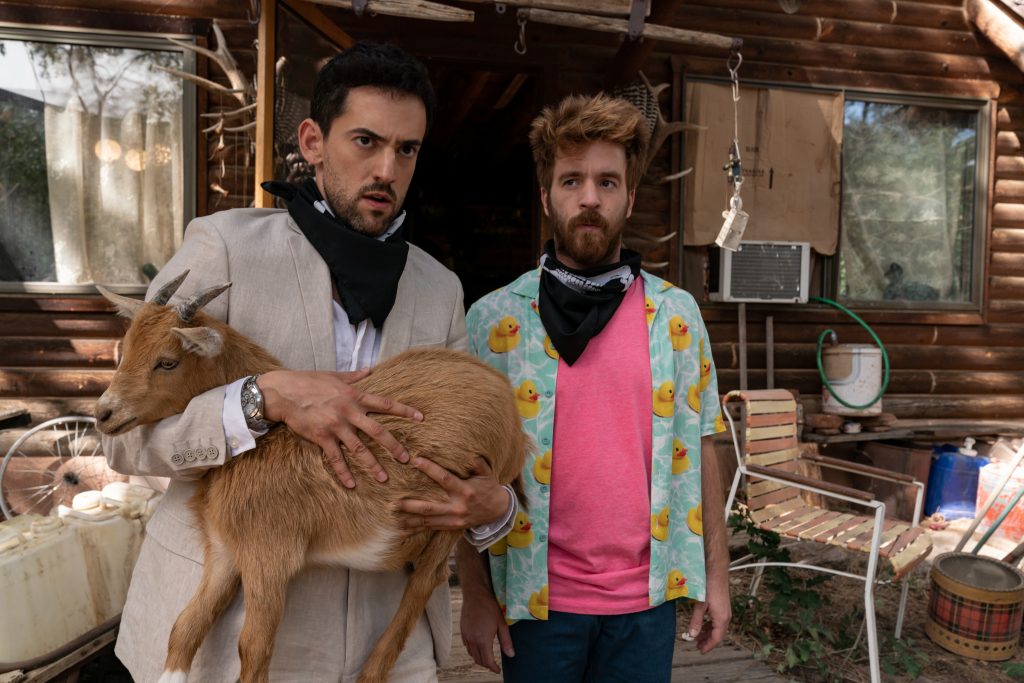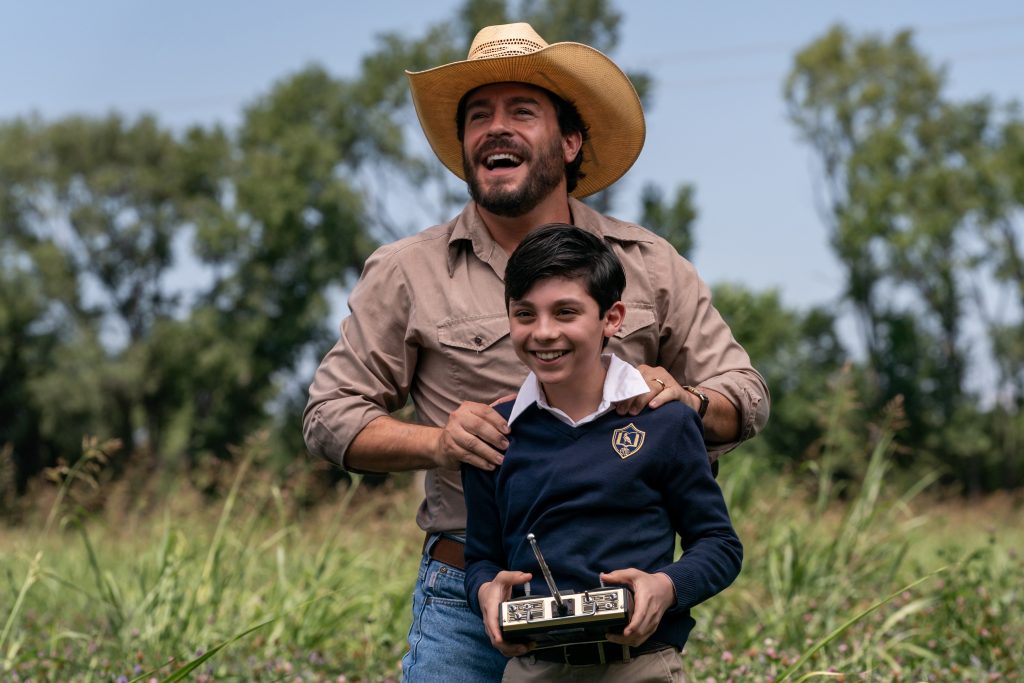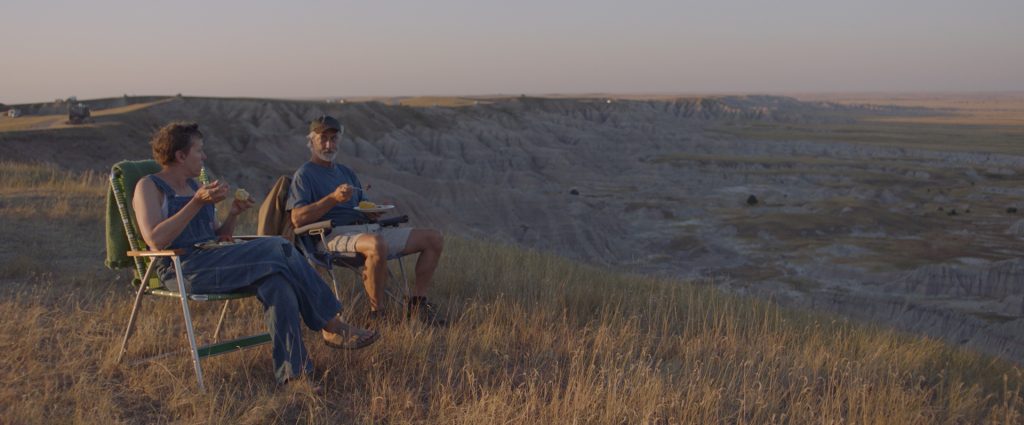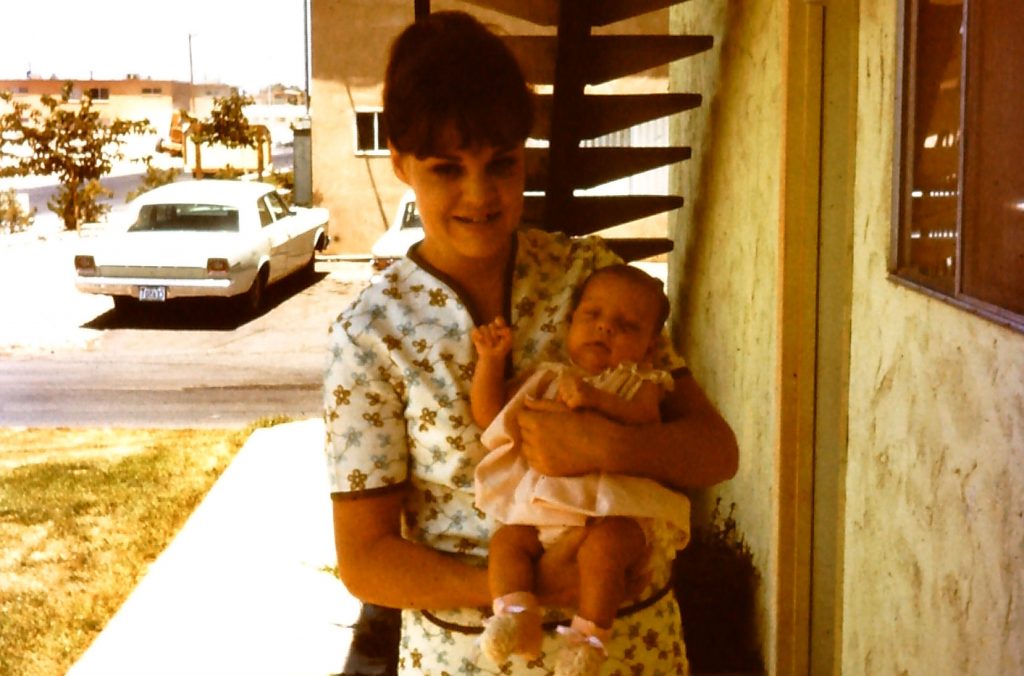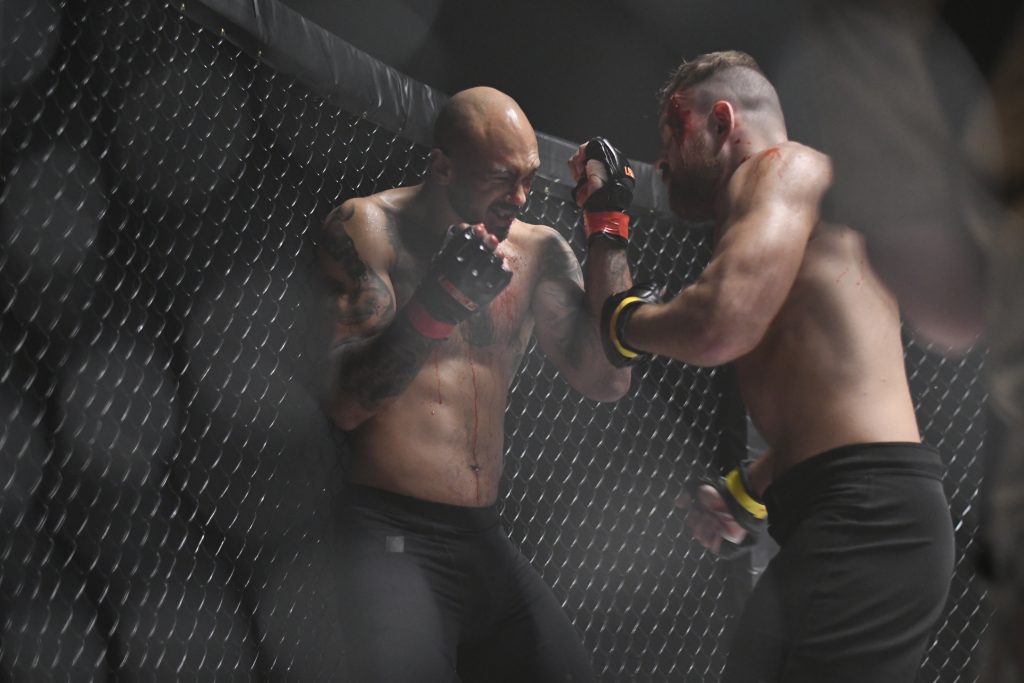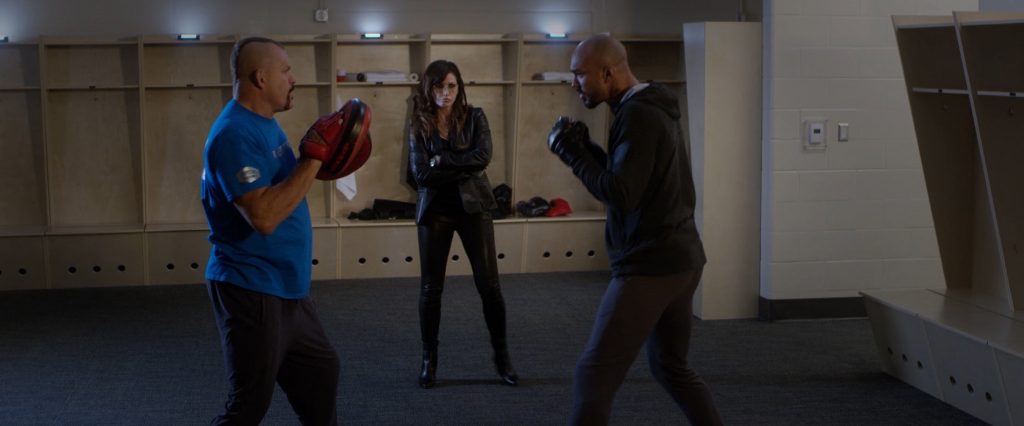December 7, 2020
by Carla Hay

“Driving While Black: Race, Space and Mobility in America”
Directed by Gretchen Sorin and Ric Burns
Culture Representation: The documentary “Driving While Black: Race, Space and Mobility in America” features a predominantly African American group (with a few white people and one Latino) of academics, entrepreneurs, historians and authors discussing the racial prejudices and challenges experienced by African Americans who’ve taken various modes of transportation, especially cars, in the United States.
Culture Clash: African Americans are often the targets of bigotry, violence or other acts of hate for driving or traveling.
Culture Audience: “Driving While Black” will appeal primarily to people interested in well-researched historical accounts of racial bigotry in America, but the movie lacks perspectives from young people and in-depth coverage of recent “driving while black” controversies.

There are tragically too many stories, both known and unknown, of people of color being refused service, getting harassed, assaulted or killed because of their race. The documentary “Driving While Black: Race, Space and Mobility in America” gives a mostly somber historical chronology of how race plays a role in the mistreatment of black people who travel by motor vehicle in America. Directed by Gretchen Sorin and Ric Burns, the documentary has a very scholarly tone, since most of the people interviewed for the film are academics.
The movie, which has the usual blend of talking heads and archival footage, can come across as too dry and stodgy for some viewers. No one under the age of 50 is interviewed in the movie. And shutting out that youthful perspective is a strange choice for this documentary, because young people are often the most vulnerable and frequent targets of racism for “driving while black.”
Because a great deal of “Driving While Black” is about what happened before the 21st century, “Driving While Black” might also disappoint people who are expecting more current events to be the primarily focus of the film. The movie is told in chronological order, so it isn’t until the last half-hour of this nearly two-hour film that people will see modern examples of racist incidents caught on video, involving African Americans who were harassed in or near their cars and were sometimes killed. News clips and viral videos are shown of these incidents, but the documentary doesn’t try to investigate or reveal anything new.
In other words, don’t expect to see any groundbreaking insight into some of the most notorious “driving while black” incidents that are widely described as racist because of controversial police actions against Rodney King, Sandra Bland, Philando Castile, Richard Hubbard III or Jacob Blake. All of these incidents stemmed from these unarmed African Americans being stopped by police while in or near a car. The documentary has brief snippets of video clips from these incidents but doesn’t interview anyone involved.
Even though the title of the movie is called “Driving While Black,” the documentary actually covers all major forms of transportation (except airplanes) and how transportation pertains to racial bigotry. The movie begins with an overview of how Africans were captured and brought to America in ships as slaves in the 1600s. “Think of the trauma and the terror and the violence of that forced mobility,” comments Stanford University historian Allyson Hobbs.
The movie covers how white racists who want to control where and when African Americans could go is a shameful part of American culture, harkening back to the slave days when slave owners would viciously beat or kill slaves for not following orders on where the slaves could or could not go. Controlling and limiting a slave’s movements were obvious ways to keep them in captivity. Massachusetts Institute of Technology historian Craig Steven Wilder comments on this slavery era: “Right away, you have some elements of racial profiling, from the very beginning of the black experience in America.”
And after the Emancipation Proclamation freed U.S. slaves in 1883, many former slaves were left homeless and their mobility was limited by the types of housing that was denied to them by white racists. The Reconstruction Era after the Civil War gave way to a backlash against racial progress, and the Jim Crow era made racial segregation legal in the U.S. until the Civil Rights Act in 1964 outlawed it. Part of the American Dream includes ownership of land, which is a dream that is all too often denied to people because of their race.
Carolyn Finney, author of “Black Faces, White Spaces,” comments: “Land isn’t just about land. It’s about political and economic power, the power to choose. It’s about the freedom to move freely in space.”
The documentary covers the Great Migration during the Jim Crow era, when many African Americans from the South migrated North and West for better opportunities in housing and employment. Kathleen Franz, a historian at the Smithsonian National Museum of African American History and Culture, comments that lynchings of African Americans in the South fueled a lot of this migration. But even though many U.S. states outside of the South during the Jim Crow era technically didn’t make racial segregation legal, that didn’t mean that racism didn’t exist outside the South. Many African Americans and other people of color still came up against racial barriers all across America during the Great Migration.
It’s stated many times throughout the documentary that for most white people, taking a road trip means a fun-filled vacation. For many African Americans, taking a road trip can be fraught with danger. That’s because it’s part of African American culture to know, usually through first-hand experience, that being black means you will experience what it’s like to be questioned, stopped, harassed or attacked in places where you’re minding your own business and not breaking the law—just because someone might decide that you don’t belong there because of the color of your skin. The movie doesn’t say that it can’t happen to other races in America, but rather that this type of racism is more likely to happen to black people in America.
“Driving While Black” co-director Sorin is one of the commentators in the movie. She says in the beginning of the film: “Mobility is essential to freedom. I think the automobile is emblematic of the importance and the value of mobility in free society. But it also goes beyond mobility and allows us to understand the way that African Americans have moved forward in this country and the way that African Americans have been pushed back.”
Cars are usually a status symbol, so African Americans who drive luxury cars are often held under more scrutiny on the road than white people who drive the same cars. And even fame and money can’t make a black person immune to this racism. Many highly paid black celebrities have gone public about being pulled over by the police for “driving while black” and doing nothing wrong.
African American contributions to the auto industry are included in the film. Columbia University historian Kenneth Jackson notes that black people have often been tasked with doing the most dangerous jobs in auto factories, such as working foundries where steel was forged or lifting engines. And unfortunately, black neighborhoods are often targeted for destruction, as highways and freeways were and still are frequently planned to be built though these neighborhoods, forcing many of the residents to move. Writer/filmmaker Lois Elie comments on how a neighborhood’s racial population and property values are always factors in construction of highways and freeways.
As black people in the Jim Crow era started to have more access to cars, it became important to know which businesses and areas were safe for people of color on road trips. There were several guide books, such as “Smith’s Guide,” “Grayson’s Guide” and the most well-know one of all: “The Negro Motorist Green Book,” which was first published in 1936 by its creator Victor Hugo Green, an enterprising African American entrepreneur who had no previous publishing experience.
The documentary includes an interview with real-estate salesperson Howard Glener, whose father took a chance on Green to print the first editions of the book, which many other white publishers refused to print. “The Negro Motorist Green Book” (which inspired the Oscar-winning 2018 movie “Green Book”) was widely distributed, with Esso gas stations being one of the publication’s main distributors.
As historian Hobbs mentions in the film, road trips for black people during the Jim Crow era had their pros and cons. On the one hand, the road trips gave black people more freedom and mobility. (These road trips were often to look for work or to visit family members.) On the other hand, Hobbs says that road trips gave black people more “exposure to more violence, indignity and humiliation.” Travel guides such as “The Negro Motorist Green Book” certainly helped many road travelers, but it could never cure the cancer of racism.
Not all of “Driving While Black” is about the doom and gloom of racism. One of the great things to come out of these travel guides was the sense of community that developed between businesses that welcomed black customers during the Jim Crow era when other business refused to serve black people. The Dew Drop Inn in New Orleans is mentioned as one of the more well-known establishments that was a haven for black people during the Jim Crow era. And several African Americans began to build their own upscale communities, such as Lincoln Hills, Colorado. Nancelia Jackson, a Lincoln Hills resident, calls it a “country club for black people.”
Dooky Chase’s, an African American-owned restaurant in New Orleans was one of the businesses that was in the travel guides listing safe places where black people could go during road trips. The documentary includes interviews with Dooky Chase’s owner Leah Chase and her daughter Stella Chase Reese (the manager of Dooky Chase’s) who offer their perspective and fond memories of the community of customers that the restaurant has had over the years. However, Chase laments that a lot of that community started to fade away after racial integration, because she says that wealthier black people began to gravitate to businesses owned by white people.
Cars played an important role for black people during the Civil Rights Era in the 1960s, when people were boycotting public transportation (such as buses and trains) that were racially segregated. Many civil rights activists organized carpools in their communities. Wilder comments, “It’s a wonderful way of thinking of how black people deployed the automobile to challenge Jim Crow.”
During the documentary’s last half-hour, there’s some discussion about how smartphones and social media have helped expose the types of racial profiling and racist police brutality that have been committed against black people who are driving or on the road. Fath Ruffins, a curator/historian at the Smithsonian National Museum of African American History and Culture, compares this media exposure to when the civil rights movement was broadcast on TV in the 1960s: “Something similar is going on today, where people who are not African American have begun to see, ‘Wow, there is really a tremendous difference in what driving around America and being black is than the average white American.'”
But being exposed to these racial differences and wanting to do something about racial injustice are two separate things. Jackson says that there is “widespread indifference or complicity by whites” in police violence against black people who are pulled over in traffic stops. Pasadena City College historian Christopher West gets emotional and tears up when he talks about the fear and sadness that he has for his children and other black children who have to get “the talk” about how to act when they’re being racially profiled. “Driving while black means driving while afraid,” West says with heartache in his voice.
Other academics interviewed in the documentary include Herb Boyd, historian and author of “Black Detroit”; film director /George Manson University Professor Spencer Crew, who is interim director of the Smithsonian’s National Museum of African American History and Culture; Thomas Sugrue, a historian at New York University. And other interviewees include Alvin Hall, creator/host of Driving the Green Book podcast; Walter Edwards, chairman of Harlem Business Alliance; Candacy Taylor, cultural documentarian/author of “Overground Railroad”; Jennifer Reut, historian/founder of Mapping the Green Book Project; Gary Jackson, a Denver County court judge whose great-grandfather co-founded Lincoln Heights; Five Points business owner Mae Stiger; journalist Tamara Banks; and Alison Rose Jefferson, historian/author of “Living the California Dream.”
People who already know a lot of African American history probably won’t discover many new facts that they didn’t already know if they watch “Driving While Black.” However, the documentary offers a lot of intelligent and thoughtful commentary, as well as important archival material (photos, videos and audio recordings) to give a deeper understanding of this history. Some of the archival material includes recordings and interviews with people who lived through the Jim Crow era.
Overall, “Driving While Black” is recommended for anyone who wants a broad historical context for why so much racial injustice is still happening in the United States. “Driving While Black” co-director Sorin wrote the 2020 nonfiction book “Driving While Black: African American Travel and the Road to Civil Rights,” and this documentary can be considered a visual companion to the book. Just like the book, the documentary is a sobering declaration that the history of racism continues to repeat itself.
PBS premiered “Driving While Black: Race, Space and Mobility in America” on October 13, 2020.





